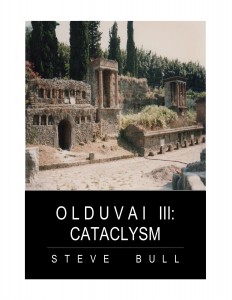Home » Posts tagged 'limits to growth' (Page 5)
Tag Archives: limits to growth
Why it (sort of) makes sense for the US to impose tariffs
Why it (sort of) makes sense for the US to impose tariffs Nearly everyone wonders, “Why is Donald Trump crazy enough to impose tariffs on imports from other countries? How could this possibly make sense?” As long as the world economy is growing rapidly, it makes sense for countries to cooperate with each other. With the […]
2019: World Economy Is Reaching Growth Limits; Expect Low Oil Prices, Financial Turbulence
2019: World Economy Is Reaching Growth Limits; Expect Low Oil Prices, Financial Turbulence Financial markets have been behaving in a very turbulent manner in the last couple of months. The issue, as I see it, is that the world economy is gradually changing from a growth mode to a mode of shrinkage. This is something like […]
How the light gets in
How the light gets in The science behind growth scepticism The Entropy Law still matters. CUSP director Tim Jackson responds to Michael Liebreich’s essay on the ‘The secret of eternal growth’. CC.0 :: ipicgr / pixabay.com It’s probably fitting that Michael Liebreich’s The Secret of Eternal Growth was published so close to Halloween. It’s so […]
Our Bonus Decade
Our Bonus Decade “The sense of security more frequently springs from habit than from conviction, and for this reason it often subsists after such a change in the conditions as might have been expected to suggest alarm. The lapse of time during which a given event has not happened, is, in this logic of habit, […]
Eco Crises: Doom & Gloom, Truth & Consequences
Eco Crises: Doom & Gloom, Truth & Consequences Photo Source Sakeeb Sabakka | CC BY 2.0 …We can’t save the world by playing by the rules because the rules have to change. Everything needs to change and it has to start today….To all the politicians that pretend to take the climate question seriously, to all […]
Why Economists Can’t Understand Complex Systems: Not Even the Nobel Prize, William Nordhaus
Why Economists Can’t Understand Complex Systems: Not Even the Nobel Prize, William Nordhaus The “base case” scenario of “The Limits to Growth” 1972 report to the Club of Rome. The strong non-linearity of the behavior of complex systems — including the global economy — is nearly impossible to understand for people trained in economics. William […]
What can we do?
What can we do? At the University of Minnesota Dr. Nate Hagens teaches an honours course called “Reality 101: A Survey of the Human Predicament.” Hagens operated his own hedge fund on Wall Street until he glimpsed, “a serious disconnect between capitalism, growth, and the natural world. Money did not appear to bring wealthy clients […]
The Transition Towns Movement … going where?
The Transition Towns Movement … going where? The global predicament cannot be solved other than through a Transition Towns movement, and the emergence of such a movement has been of immense importance. But I fear that the present movement is not going to do what’s needed. Four years ago I circulated reasons for this view. […]
Work in a World Without Growth
WORK IN A WORLD WITHOUT GROWTH A fixation with growth in economics has seen GDP increase in proportion to environmental damage. As planetary limits draw ever closer and are even being surpassed, such a model cannot be sustained. Riccardo Mastini explains how a job guarantee could open up the way to a sustainable economic model. […]



